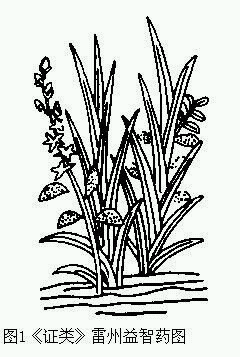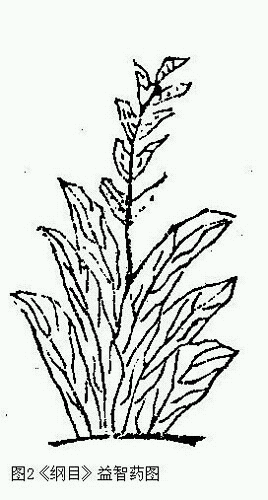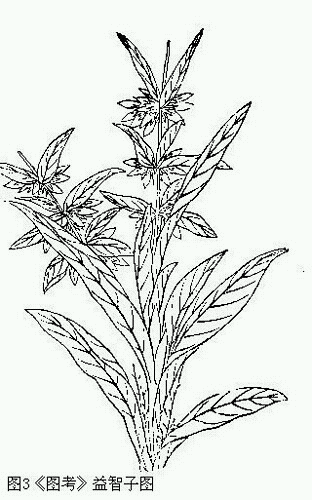| title | Benefiting Intelligence |
| release time | 2006/8/18 |
| source | Jade Knock Studio |
Villous Amomum Fruit is the dried mature fruit of Amomum villosum Lour., Amomum villosum Lour. var. xanthioides T. L. Wu et Senjen, or Amomum longiligulare T. L. Wu of the Zingiberaceae family. Amomum villosum is originally from Yangchun, Yangjiang, Luoding, Xinyi, Maoming, Enping, and Xuwen in Guangdong. It has been successfully introduced in Jinghong, Mengla, Simao, Dehong Prefecture, Wenshan Prefecture, Xishuangbanna, and other areas in Yunnan, where the yield now exceeds that of Guangdong, making it the mainstream medicinal source. Additionally, small amounts are cultivated in Guangxi and Fujian. Amomum villosum var. xanthioides is mainly produced in Vietnam, Myanmar, and Thailand, with wild and cultivated varieties found in Lincang, Wenshan, Gengma, Menghai, Funing, Jinghong, and other areas in southern Yunnan. The imported variety is referred to as "Western Villous Amomum Fruit." Hainan Villous Amomum Fruit is primarily produced in Chengmai and Yaxian in Hainan, as well as Mengla and Jinghong in Yunnan, and in Guangdong and Guangxi.
Materia medica research suggests that Villous Amomum Fruit was originally called "Shoushami" (縮砂蜜). During the Tang Dynasty, it was mainly imported. By the Song Dynasty, cultivation of Amomum villosum began in Xinxing and Yangchun in Guangdong, and it was used medicinally. This region has maintained its status as a genuine production area.
bubble_chart Varietal Examination
Villous Amomum Fruit was originally named "Shoushami" (縮砂蜜), with alternative spellings such as Villous Amomum Fruit, Shoushami (縮砂密), and Shoushami (縮沙蜜). Regarding the medicinal name, the *Bencao Gangmu* explains: "The meaning of the name is unclear. The lotus rhizome node has white shoots with many fibers, suggesting the idea of being densely hidden. This substance is indeed found beneath the roots, with the kernel hidden inside the shell, which may also imply this meaning." Qu Dajun's *Guangdong Xinyu* states: "The term 'Shousha' refers to its shell, 'Mi' refers to its kernel, 'Villous Amomum Fruit' refers to the fresh form, and 'Villous Amomum Fruit' refers to the dried form." The *Bencao Yuanshi* also notes: "This substance is found beneath the roots, with a tightly wrinkled and thick shell, and kernels resembling sand grains densely hidden inside, hence the name 'Shoushami,' commonly called Villous Amomum Fruit." According to various annotations, "Shoushami" is a foreign term. Based on the *Tang-Fan Two-Language Bilingual Collection* compiled by the Tang monk Datou Jiebo Boluo Qunamishe, the Sanskrit term for Shoushami is "Suqishimiluo." The *Sanskrit Miscellaneous Names* records a similar term. Fragments of medical texts numbered 1074 and 3976 in the Otani documents mention "Suosuomi," which is also a transliteration of this term.
Shoushami is mentioned in the *Bencao Shiyi*. Chen Cangqi states: "Shoushami has a sour taste and is used to treat abnormal rising of qi, cough, running-piglet syndrome, ghost afflictions, fright epilepsy, and pathogenic qi. It resembles cardamom seeds." The *Yaoxing Lun* mentions that it "originates from Persia." The *Haiyao Materia Medica* provides more detailed records: "According to Chen, it grows in the Western Sea and the Western Rong regions. It has a pungent, neutral, and salty taste, often coming via the Andong route." The Western Sea generally refers to the Persian Gulf and Mediterranean regions, while Persia refers to the countries west of Xinjiang near the Persian Gulf. As for Li Xun's statement that it "often comes via the Andong route," this is unclear, as Andong is located in present-day Korea, which is geographically opposite to Persia, suggesting a possible error.In the Tang Dynasty, Amomum villosum was all imported. Based on its distribution, it should mainly be Amomum villosum var. xanthioides. In the Song Dynasty, Lingnan began to provide medicinal materials of Amomum villosum. Although Bencao Tujing states that "it is found in the mountains and swamps of Lingnan," the local records and plant catalogs of Lingnan from the Tang Dynasty and before do not mention this plant, suggesting that it was likely introduced through cultivation.



Kaibao Bencao states: "Grows in the southern regions, the seedling resembles Lesser Galangal, shaped like Cardamon Fruit, with a tight, thick, and wrinkled skin, yellow-red in color, harvested in August." Bencao Tujing provides a more detailed description: "Suoshami grows in the southern regions, now only found in the mountains and swamps of Lingnan. The seedling stem resembles Lesser Galangal Rhizome, three to four feet tall. Leaves are green, eight to nine inches long, about half an inch wide. Flowers bloom at the root in March and April, fruits form in May and June, fifty to seventy fruits per spike, resembling Yizhi but round, with a tight, thick, and wrinkled skin like chestnut patterns, covered with thorns, yellow-red in color. Inside the skin, there is a cluster of fine seeds, eight fistula disease, about forty grains, the size of millet, slightly black, harvested in July and August." Referring to the attached image of Suoshami from Xinzhou in Zheng Lei (Figure 1), it should be the Yangchun Sha (Amomum villosum) still cultivated in Xinxing and Yangchun, Guangdong.
After the Song Dynasty, the variety of Suoshami should not have changed. Pin Hui Jing Yao, Bencao Mengquan, and Bencao Gangmu all followed the medicinal illustrations of Zheng Lei, although the quality varied, the general depiction remained consistent. It is puzzling that Zhiwu Mingshi Tukao depicted Villous Amomum Fruit as a small shrub (Figure 2), which is not a ginger plant at all. How this situation arose is unknown. Zhang Shaotang, who was adept at replacing the medicinal illustrations in Bencao Gangmu with those from Tukao, chose to use the illustration from Zheng Lei for Villous Amomum Fruit, suggesting that Zhang had seen plants similar to Yangchun Sha.As for the modern use of Hainan Sha (Amomum longiligulare) as Villous Amomum Fruit in medicine, it likely rose from a late substitute to a standard product.
bubble_chart Historical Evolution of Authentic Production Areas
Regarding the domestic production areas of Suoshami, Xinzhou and Chunzhou in Guangdong should be the original cultivation sites, corresponding to the current Xinxing and Yangchun counties. These areas have been famous for their produce throughout history. Guang Dong Xin Yu states: "Villous Amomum Fruit is produced in Yangchun and Xinxing, but those grown in the southern river of Yangjiang are larger and more potent. The planting area is called Guoshan, named after Villous Amomum Fruit, just as the flower fields are named after Su Xin." Nan Yue Bi Ji also agrees with this. It is traditionally believed that the Villous Amomum Fruit from Panlong Mountain in Yangchun is the best of the best. Yao Wu Chu Chan Bian states: "Produced in Yangchun County, Guangdong, the best comes from Panlong Mountain." Zhong Guo Chang Yong Chinese Medicinals also quotes Yang Chun Xian Zhi: "The honey produced in Panlong is praised for its unique qualities, and the medical community highly values Chunsha."
In the Qing Dynasty, besides Guangdong, Guangxi also produced Suoshami. Guang Xi Tong Zhi states: "Suoshami seedlings resemble ginger, shaped like Cardamon Fruit, those produced below Zutan are not inferior to those from Luofu." Zeng Ding Weiyao Tiaobian states: "Suoshami is Yangchun Sha, produced in Yangchun County, Zhaoqing Prefecture, Guangdong, named Yangchun Sha, triangular oblong, slightly pointed at both ends, with purple-red skin and thorns, purple-black flesh, chewed with a spicy and slightly pungent aroma, the most authentic. Those produced in Luoding have flat and round heads, short thorns, purple-brown skin, and a weaker aroma, slightly inferior. Those produced in Guangxi are named Xisha, round with thin skin, shallower thorns, reddish-black in color, with a lighter aroma, even more inferior."bubble_chart Other Related Items




